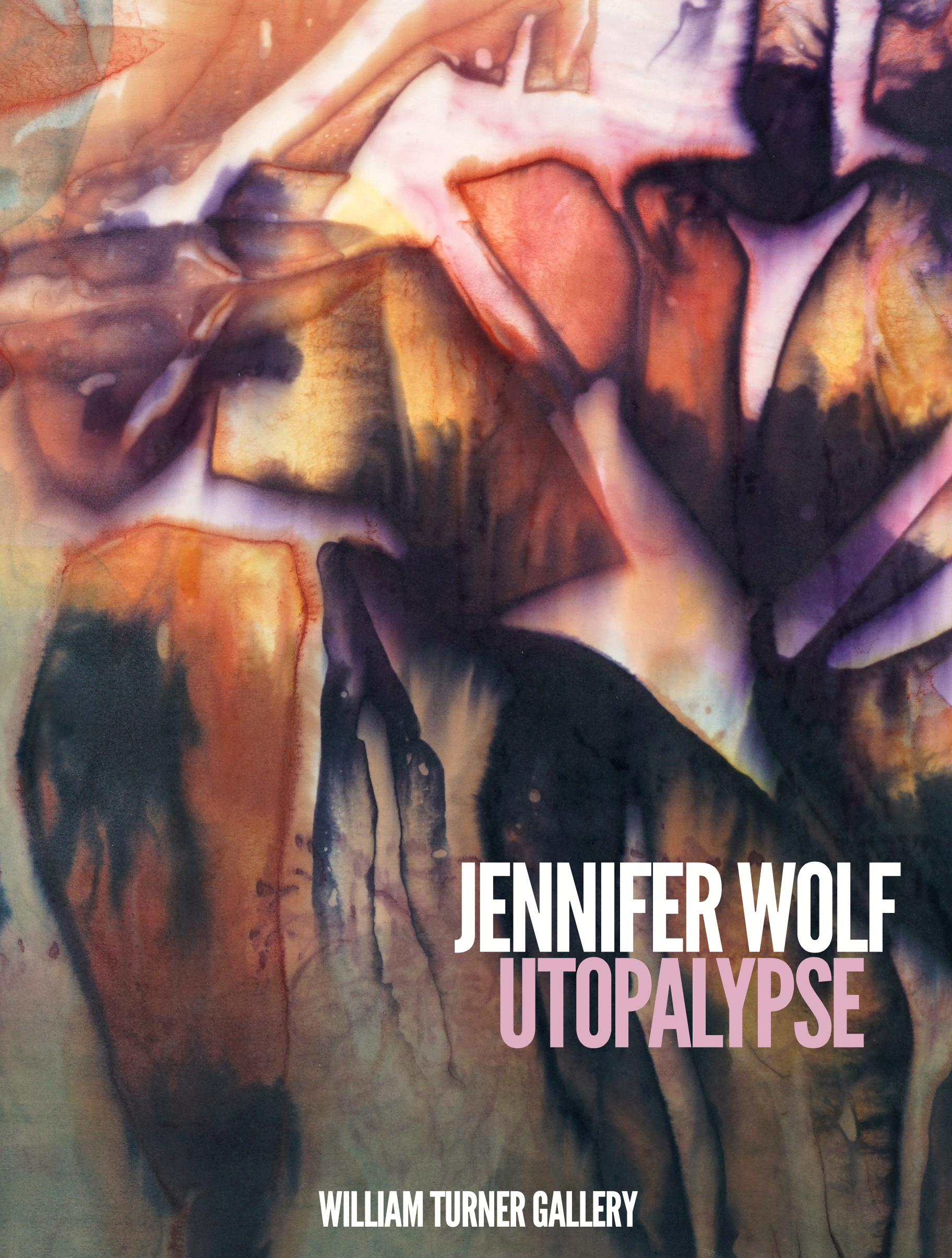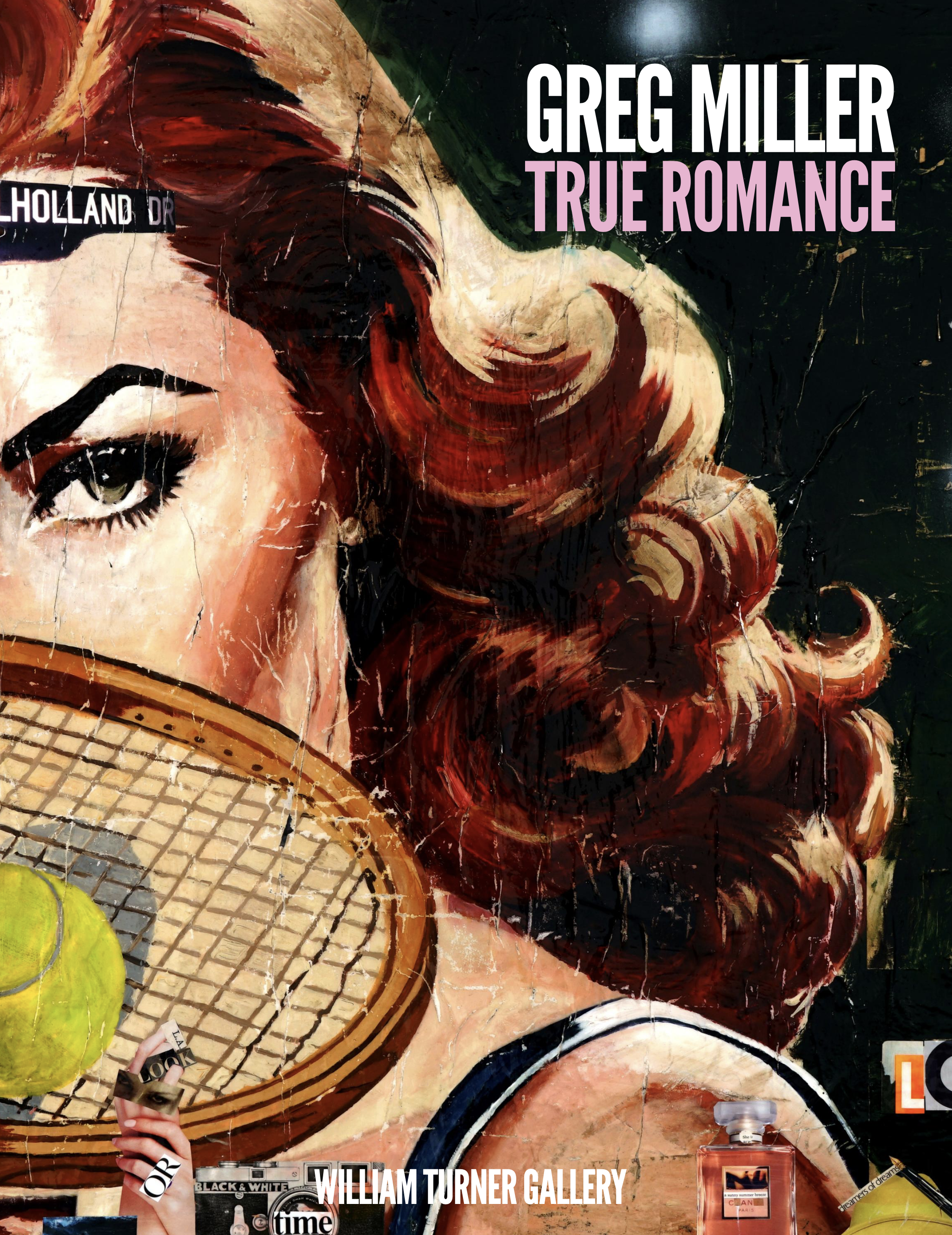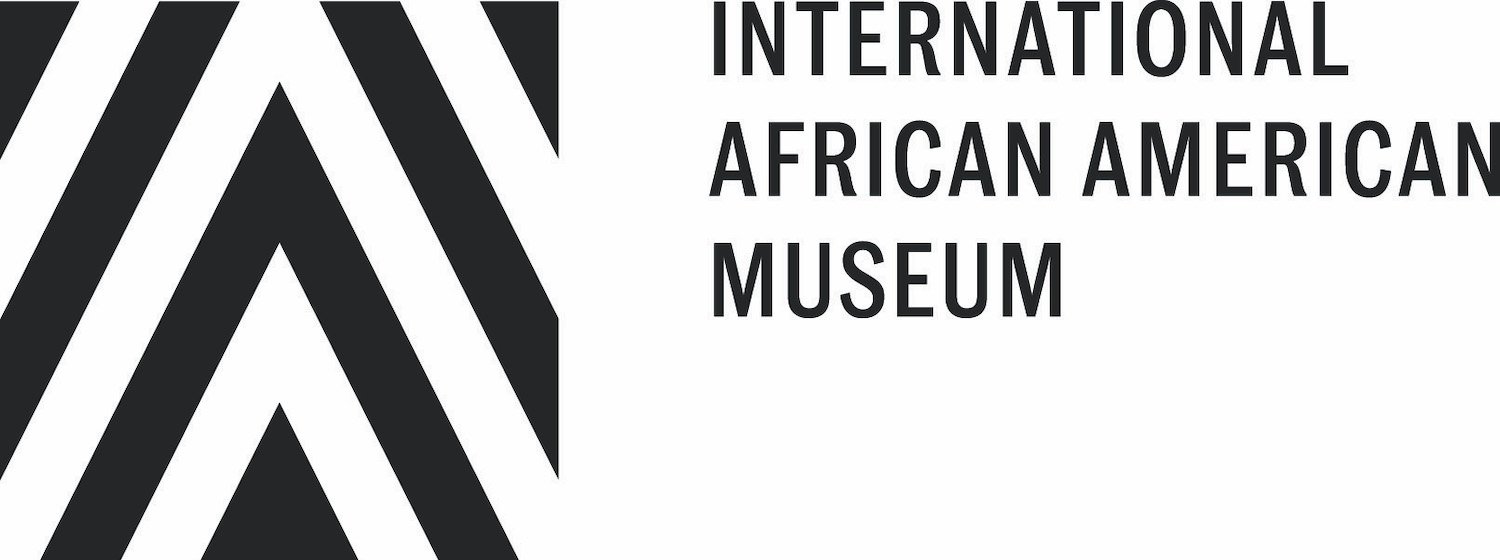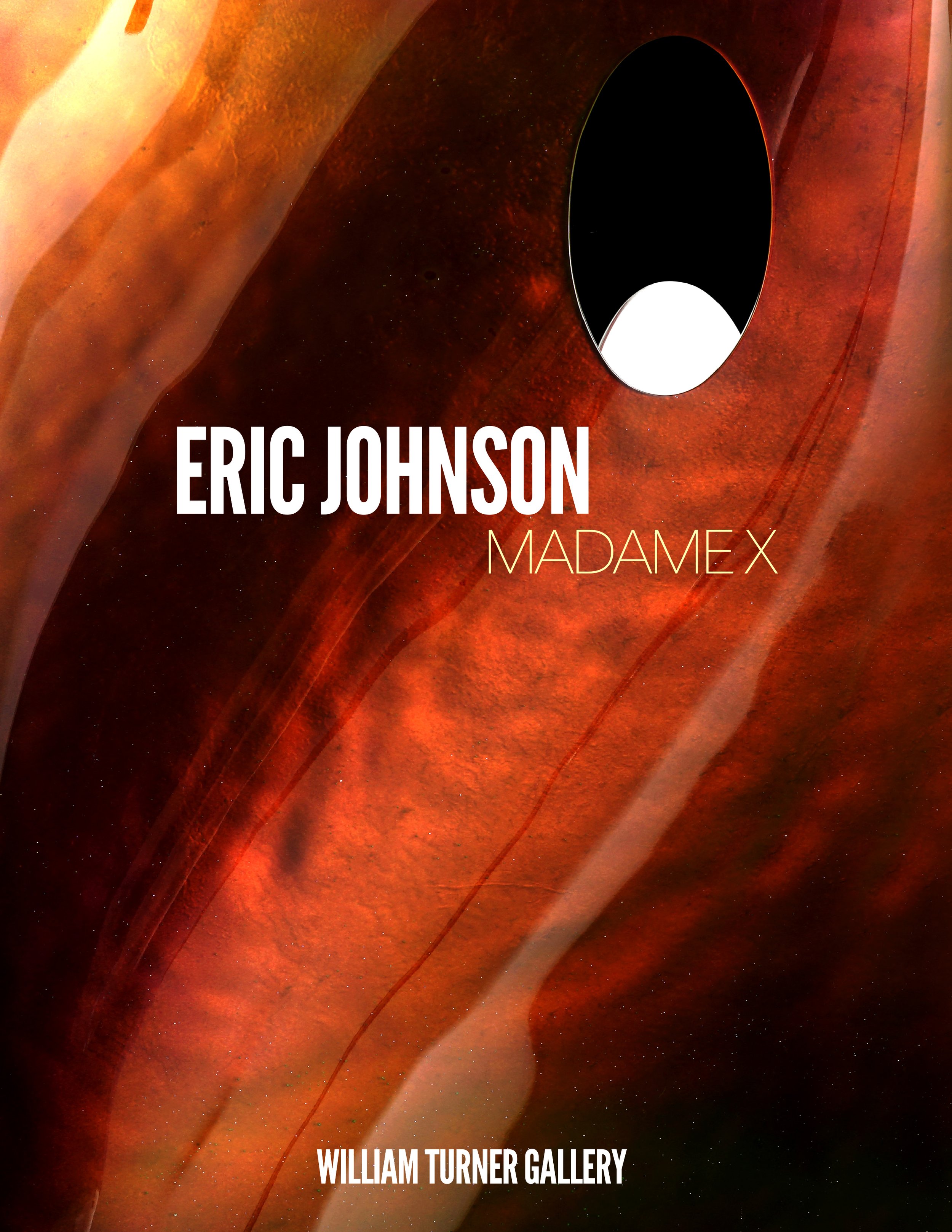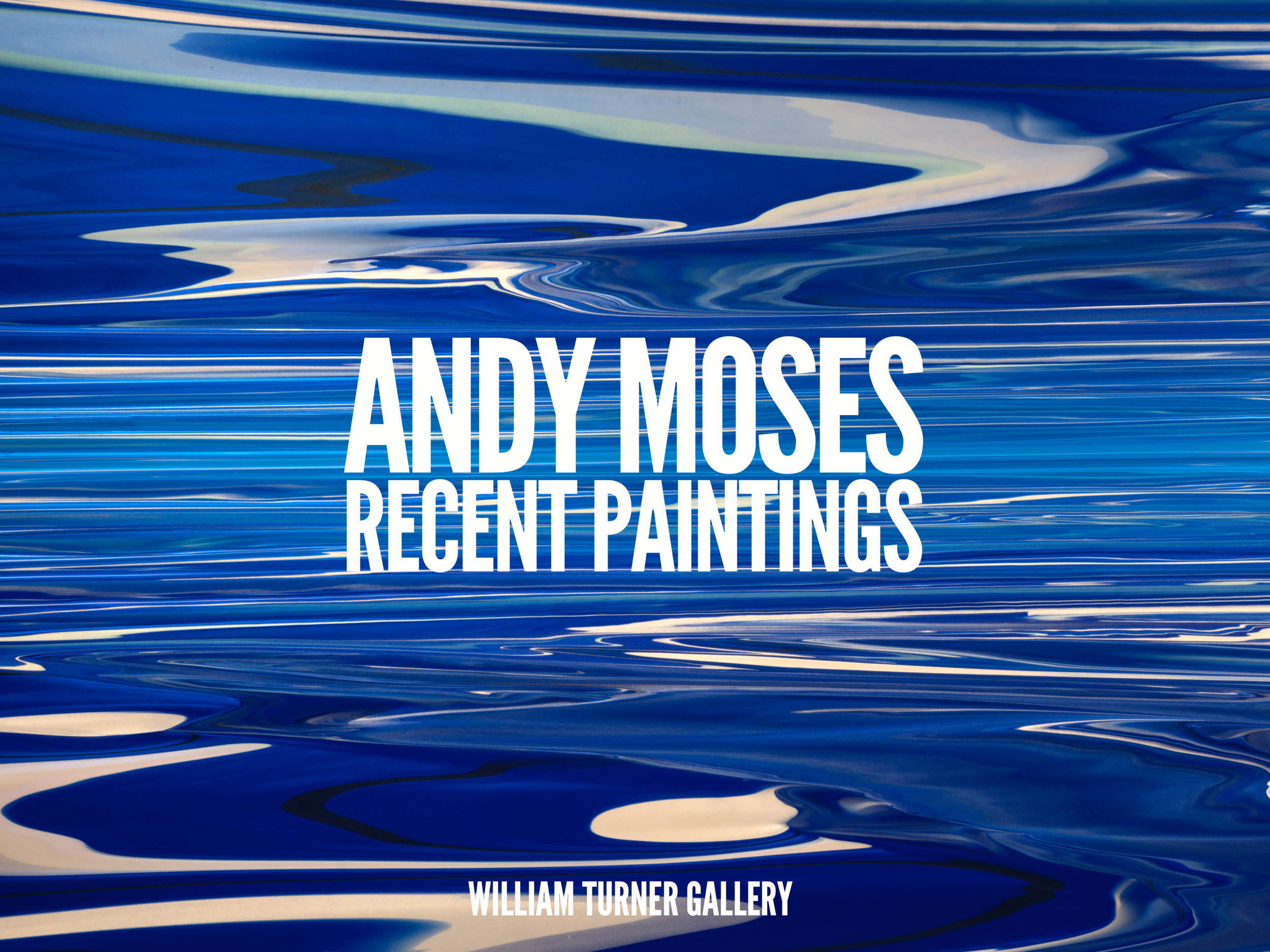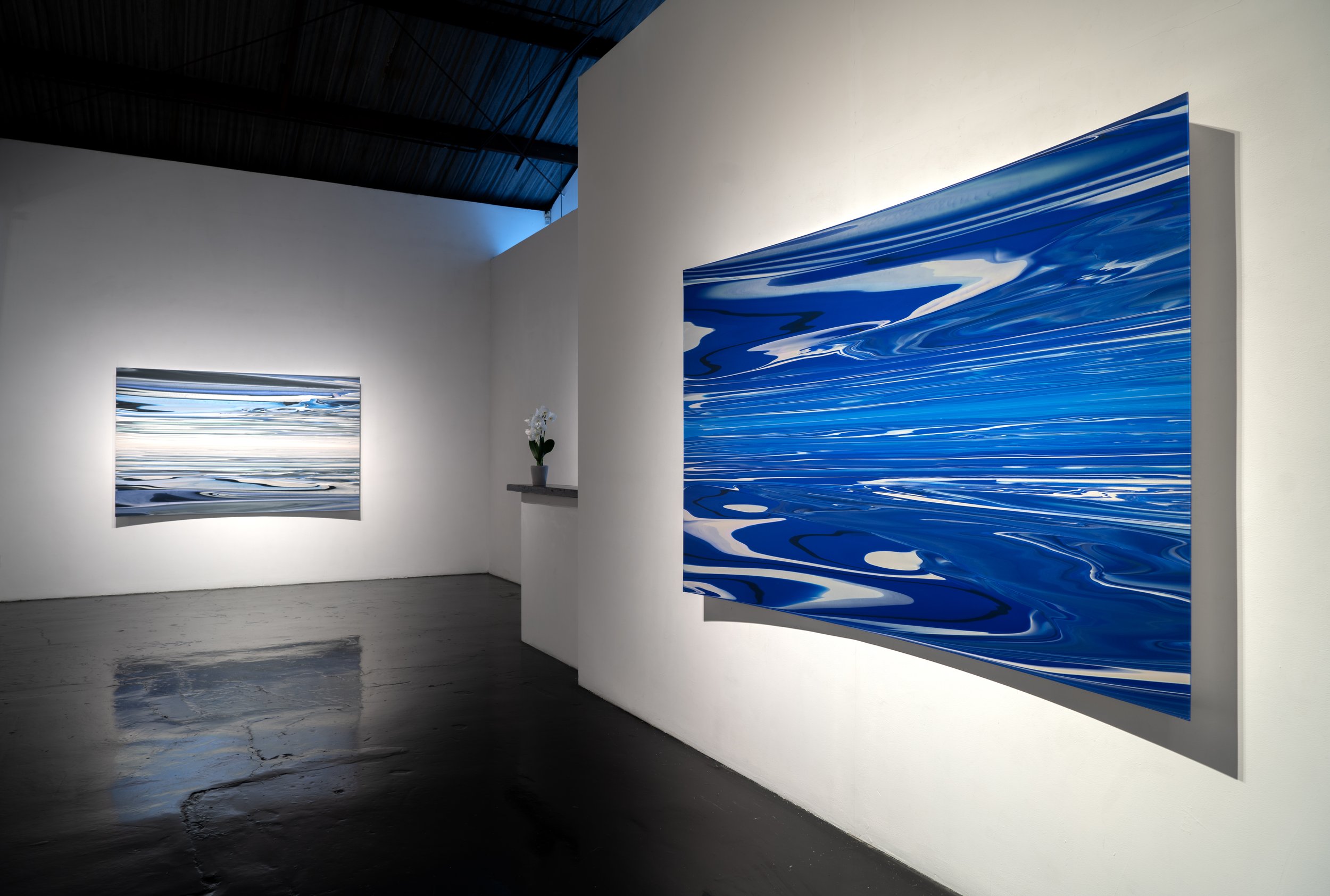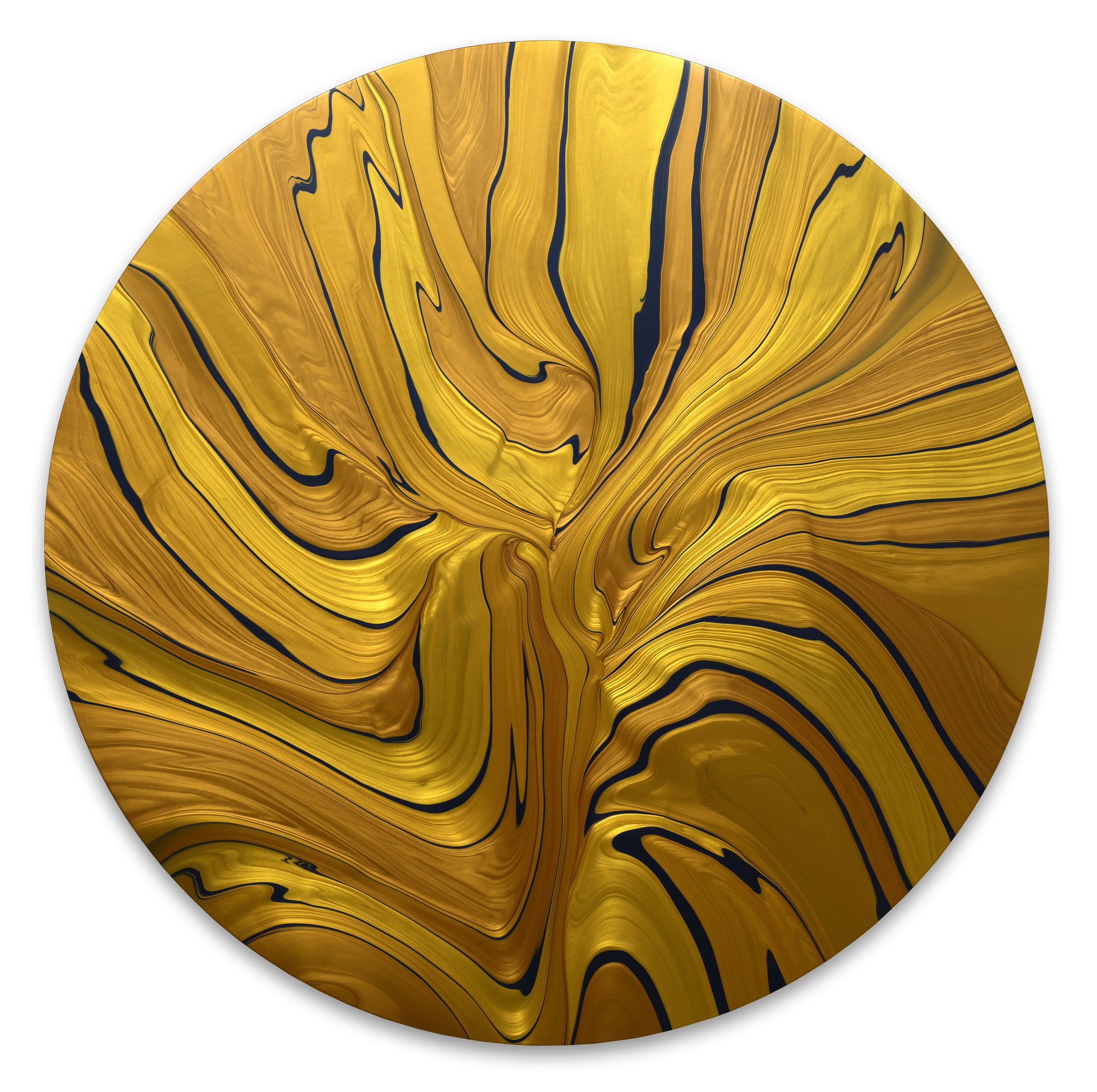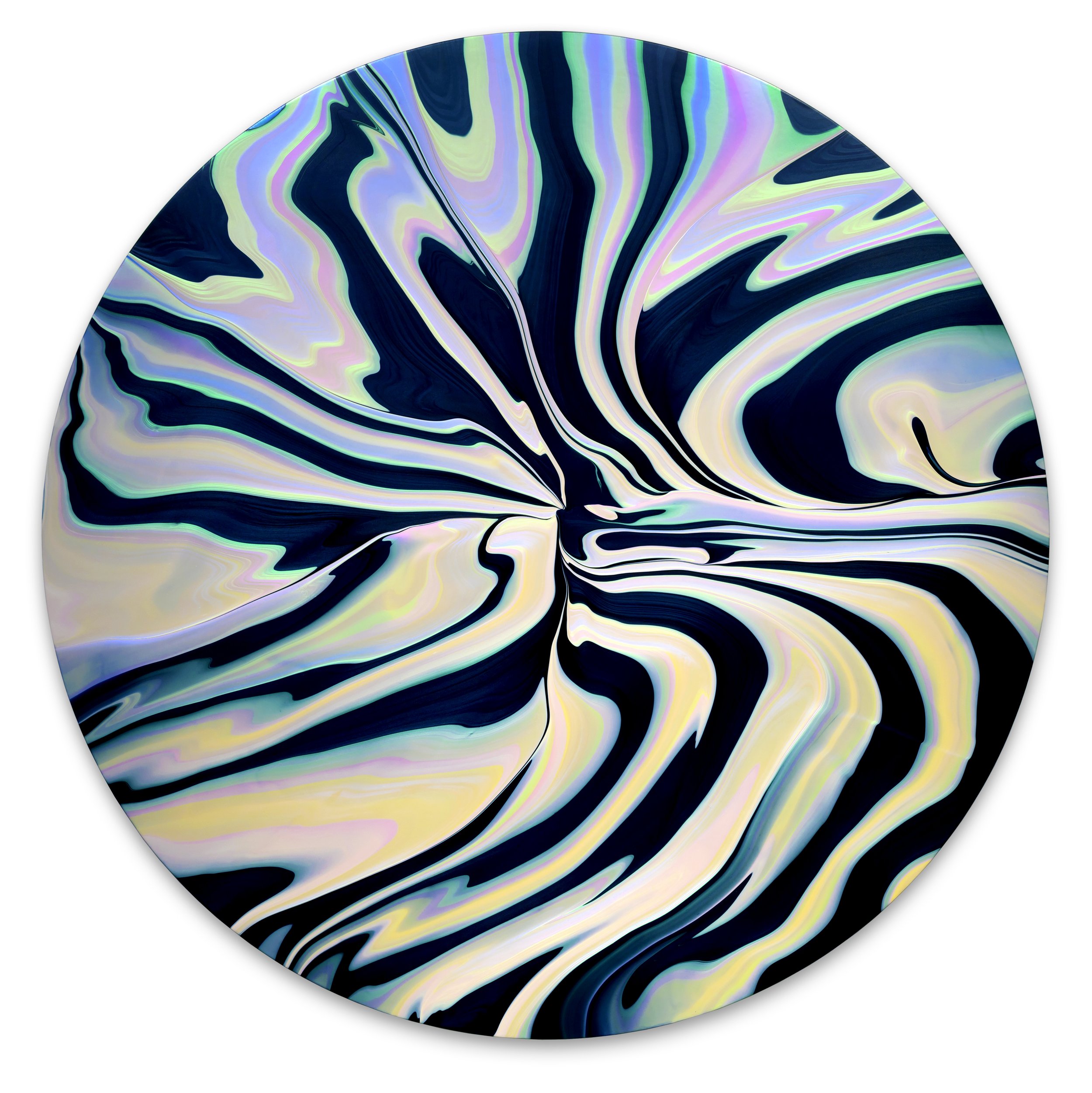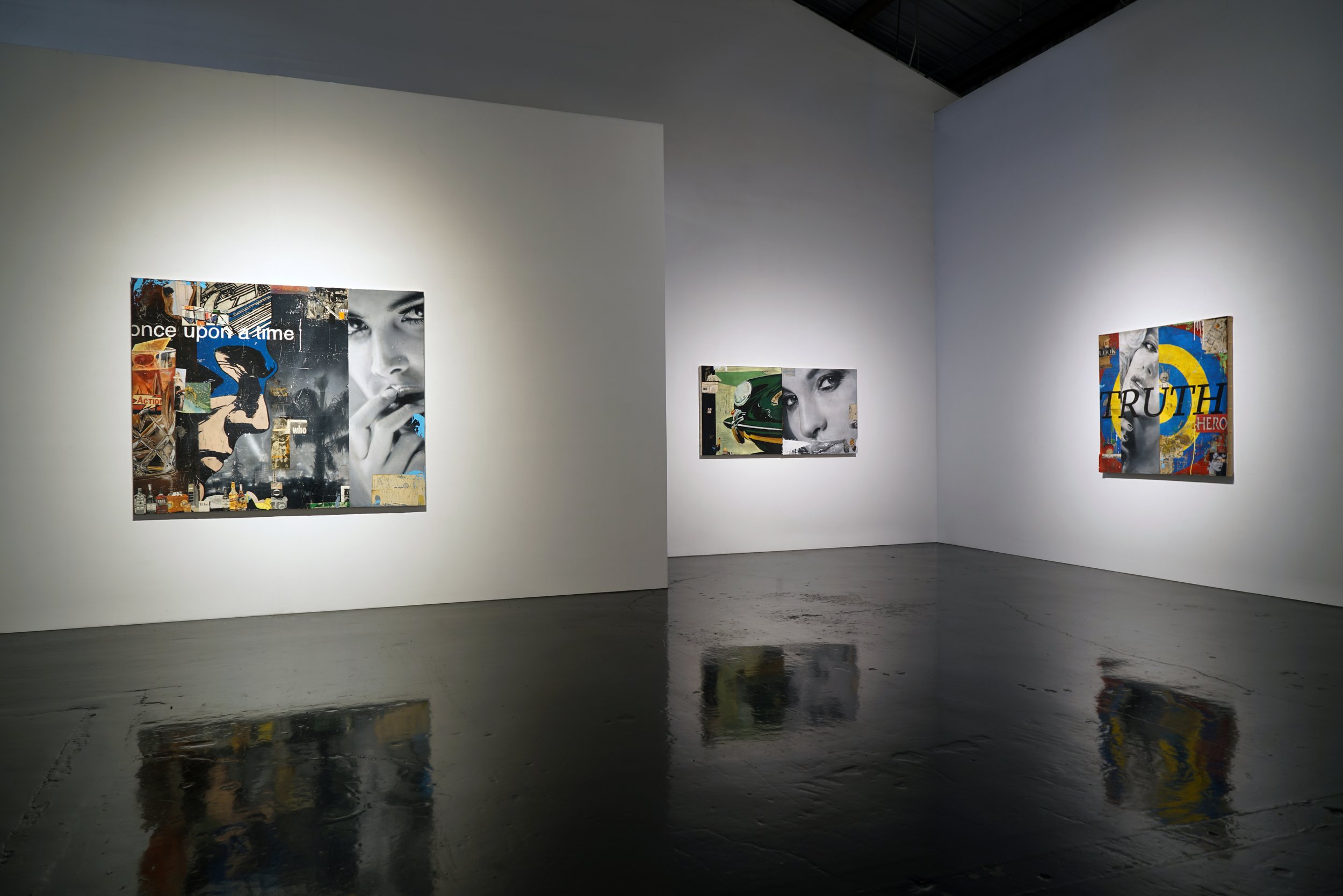William Turner Gallery will present Andy Moses: Recent Paintings, a compelling exhibition of new large-scale works by Los Angeles-based artist, Andy Moses. The exhibition will run from September 9th through November 11th, 2023.
Andy Moses: Recent Paintings is an excitingly ambitious new body of work, showcasing an artist fully engaged and at the height of his creative process. Blurring the line between abstraction and a new kind of pictorialism, Moses utilizes techniques that facilitate his almost obsessive study of the alchemical properties of paint. The paintings that emerge articulate the abstract nature of perception, reaching beyond the material and tapping into the visceral.
The images reveal undeniable traces of natural phenomena, seeking not to replicate the natural world, but rather to suggest the forces of nature itself. The artist’s complex process of mixing and pouring paints conveys a sense of undulating energies pushing and pulling within the rectilinear and circular forms of the canvases themselves.
The paintings are sweeping and luminescent, their lustrous surfaces seemingly executed with an impossible combination of absolute precision and wild improvisation. Meandering lines of psychedelic chroma oscillate between vivid sharpness and dissolving washes of color, achieving works of captivating presence. Viewing the work from multiple perspectives, one is swept into an interactive dance, as light plays across the surfaces in lustrous ever-changing hues.
Speaking about his work, Moses says, “I want the work to stop you in your tracks, to shake you out of your head and into the moment, into the present, where you can become receptive to a more meditative experience that hopefully begins to attune you to the transcendent beauty of the natural world.”
Born in Los Angeles in 1962, Andy Moses attended the legendary CalArts from 1979-1981, studying with John Baldessari, Michael Asher and Barbara Kruger. In 1982, Moses moved to New York where he worked as a studio assistant to Pat Steir and quickly became part of New York’s nascent art scene. Moses began exhibiting with Annina Nosei Gallery, shortly after Jean-Michael Basquiat. During that time Moses also developed close ties with artists such as Jeff Koons, Marilyn Minter, Rudolf Stingel and Christopher Wool, who were also just emerging onto the scene.
After eighteen years in New York, Moses returned to Southern California in 2000, where the change in coasts led to a significant shift in his work. In New York, the artist’s work had explored the macro / micro influences of nature, conveying a sense of gravitational and geologic forces. In returning to California, the scope of Moses’s work expanded, as he was once again inspired by the unique effects of light glancing off waves, and the vast sky-scapes he encountered on his daily drive down the Pacific Coast Highway. The artist began exploring materials that would capture the mercurial aspects of perception, where slight shifts in perspective would reveal dramatic shifts in impression. Accordingly, Moses’ work began to incorporate many of the qualities now associated with the Southern California Light and Space movement, where the work of art became less an “art object”, and more of a “catalyst” for one’s experience of what and how they perceived. Suggesting panoramic space, Moses began introducing concave and shaped panels to further investigate how light and its wave-lengths would curl and flex with refractive paints. These bold new paintings quickly found their audience and brought Moses to the attention of museums and major collectors alike.
Andy Moses’ work is included in the permanent collections of Los Angeles County Museum of Art, Orange County Museum of Art, Laguna Art Museum, and the Frederick R. Weisman Art Foundation. He currently lives and works in Venice, CA.



